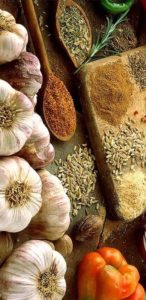Without a doubt there are natural remedies for almost all ailments or illnesses However there are a great many myths about miracle cures for acne, back pain, arthritis and so on Often you will be better saving your money and using natural methods for your aliments, aches and pains.
From our list of herbs and spices, the following are recommended for Prostate:
Scroll down for links.
- Birch Bark
- Broccoli
- Cabbage
- Capsicum
- Corn Silk
- Curcumin
- Echinacea Angustifolia
- Echinacea Purpurea
- Ginger
- Hemp Oil
- Hydrangea
- Juniper Berry
- Lycopene
- Maca
- Milk Thistle
- Nettle
- Pau D Arco
- Pumpkin Seed
- Pygeum Bark
- Quercetin
- Saw Palmetto
- Uva Ursi
Natural Cures and Remedies for Prostate
Recently Viewed
Home Remedies Hot Flashes
Home Remedies Diabetes
Home Remedies Gastritis
Home Remedies Itching
Home Remedies Piles
Home Remedies Asthma
Home Remedies Diaper Rash
Home Remedies Gallstones
Home Remedies Ringing in the ears
Home Remedies Cystitis
Home Remedies Vertigo
Home Remedies Menstrual Cramps
Aromatase is a key enzyme in steroid hormone metabolism, and its inhibition may partially explain the activity of the roots in BPH. The polysaccharide fraction of the aqueous root extract show prolonged antiedemic and antiinflammatory activity (40 mg/kg orl rat). Ethanolic extract also inhibits elastase, a destructive enzyme in the inflammatory process (IC50=68 µg/ml). The isolectin (UDA), abundant in the roots, may contribute to the antiinflammatory and antiprostatic activity of the extracts. Aqueous extracts interfere with, dose-dependently (0.6-10 mg/ml), the binding of dihydrotestosterone to SHBG (with specific receptors on human prostatic membranes). The alcoholic extract, UDA, and stigmast-4-en-3-one were inactive. At concentrations of 0.1 mg/ml, some root extracts inhibited Na+, K+-ATPases 27.6-81.5%. Stigmast-4-en-3-one, stigmasterol, and campesterol inhibited Na+, K+-ATPases 23-67% at concentrations of 1-1000 µ M. Such inhibition may influence prostate cell metabolism and growth (Bombardelli and Morazzoni, 1997). Root polysaccharide extracts anticomplementary (IC50=<50 µg/ml (HH3)). Strange that an herb should inject so many neuroactive compounds, acetylcholine, choline, formic acid, histamine, leukotrienes, and serotonin (PH2) into unsuspecting grazers.

Heavy starches,sweet stimulants and highly seasoned foods are entirely forbidden, as they cause direct irritation on the prostate gland and bladder. The diet should also exclude spices, condiments, salt in excess, sauces, red meats, cheese, asparagus, watercress, greasy or fried foods, alcohol, tobacco and too much tea or coffee. The patient should avoid hurried meals and must chew his food thoroughly and slowly. Water should be taken between meals and not at mealtime.
Birch Bark, Broccoli, Cabbage, Capsicum, Corn Silk, Curcumin, Echinacea Angustifolia, Echinacea Purpurea, Ginger, Hemp Oil, Hydrangea, Juniper Berry, Lycopene, Maca, Milk Thistle, Nettle, Pau D Arco, Pumpkin Seed, Pygeum Bark, Quercetin, Saw Palmetto, Uva Ursi
… mutagenesis and teratogenesis” (SHT). Rare reports of GI irritation in clinical studies of lipophilic extract (SKY). Varro Tyler cautioned against self medication with BPH. Whenever treating BPH a practitioner should be involved. Base-line levels of PSA should be established before considering an herbal treatment (JAD). Phytosterols, both free and conjugated, compete with androgen receptors and inhibit prostaglandin synthesis. Pentacyclic terpenes, and crataegolic, oleanolic, and ursolic acids inhibit inflammation by inhibiting the glucosyl transferase and beta-glucuronidase enzyme, which are involved in depolymerizing connective proteoglycans. Ferulic acid esters of fatty alcohols reduce prostate cholesterol, hindering androgen synthesis and reducing levels of the hormone prolactin. Prolactin increases uptake of testosterone in the prostate, and cholesterol increases binding sites for testosterone and its more active form, dihydrotestosterone (SHT; SKY). An important source of the COX-2-Inhibitor, ursolic-acid (COX).
Organs or systems affected Bladder, kidneys, prostate, skin Therapeutic actions Diuretic, cathartic, tonic Nature Pungent, sweet, cool, bitter Plant constituents Glycosides, alkaloid, saponins, resins, volatile oil, calcium, trace minerals Flower essence Provides loving and gentle support to help release repressed and internalized emotions
Selenium and vitamin E are synergistic and the two together are stronger than the sum of the equal parts. Selenium slows down ageing and hardening of tissues through oxidation. Males seem to have a greater need for this mineral. Nearly half of the total supply in the body is concentrated in the testicles and in the seminal ducts adjacent to the prostate gland.
Birch Bark
Broccoli
Cabbage
Capsicum
Corn Silk
Curcumin
Echinacea Angustifolia
Echinacea Purpurea
Ginger
Hemp Oil
Hydrangea
Juniper Berry
Lycopene
Maca
Milk Thistle
Nettle
Pau D Arco
Pumpkin Seed
Pygeum Bark
Quercetin
Saw Palmetto
Uva Ursi
It is difficult to pick a small selection of herbs for the variety of medical problems that can affect the urinary and reproductive systems. The main reason is that such herbs often have a very narrow spectrum of action: for instance, saw palmetto is specifically used to treat prostate problems. It may not be practical to store many of the herbs needed to effectively treat these systems unless you already use some of these herbs for other problems. The selection below, which is perhaps larger than that for any other system, will cover quite a few problems, but for many ailments of the urinary and reproductive systems you will need additional herbs.
